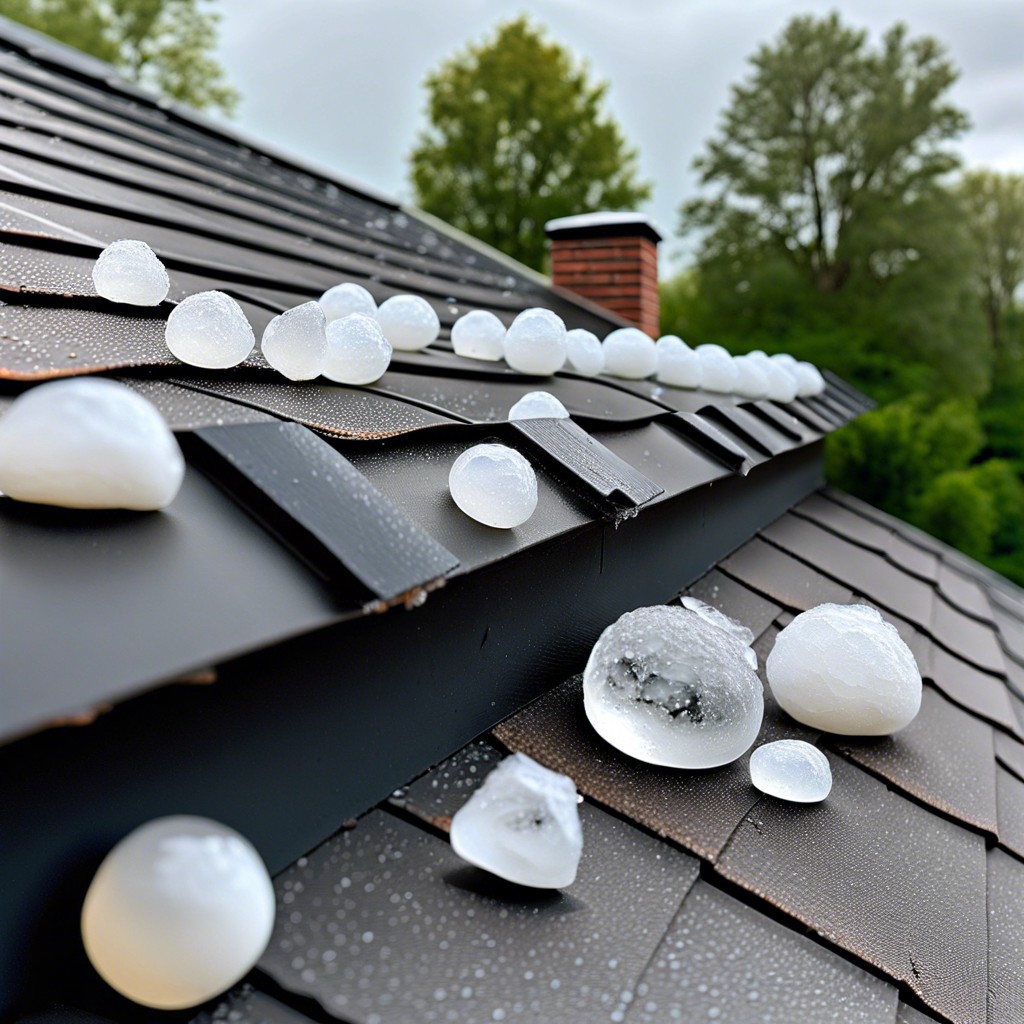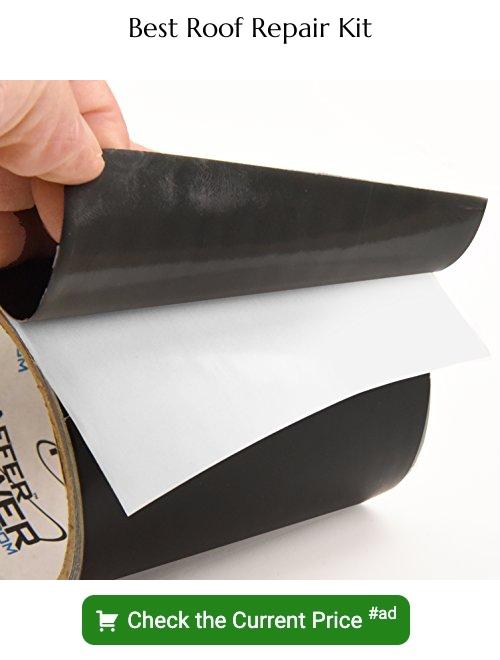Last updated on
In this article, you will unearth vital insights about the specific hail sizes that have the potential to inflict damage on your roof.
Key takeaways:
- Roof damage is not solely dependent on hail size.
- Asphalt shingles can sustain damage from 1-inch hailstones.
- Factors like wind velocity and roof substructure affect vulnerability.
- Hail size as small as 1.25 inches can cause significant damage.
- Regular inspections are crucial for early damage assessment.
You Didn’t Provide a List but Here Is an Example of How It Could Look Like

Roof damage from hail is not solely a function of size; the type of roofing materials in use, the age and condition of the roof, and additional weather factors like the velocity and angle of wind, all play crucial roles.
For instance, asphalt shingles might sustain damage from hail that measures just 1 inch in diameter, while it may take hailstones closer to 2 inches to dent metal roofing.
Even within materials like asphalt, variations such as composition, quality, and whether the shingle is architectural or 3-tab can affect vulnerability.
It’s also important to consider the roof’s substructure; a sturdy decking underlying the shingles can help mitigate damage.
Translating the size and speed of hail into potential impact, keep in mind that a hailstone falling at 20 mph could cause significantly less damage than one hurling towards your roof at 40 mph boosted by strong winds.
Definition of Hail
Hail forms when updrafts in thunderstorms carry raindrops upward into extremely cold areas of the atmosphere, where they freeze into ice. These ice particles can then collide with additional water droplets that freeze onto the initial hailstone, causing it to grow. As the hailstone becomes heavier, the updrafts may no longer be able to support its weight, leading to its descent toward the ground at high speeds.
The size of hailstones can range from that of a pea to bigger than a grapefruit. The formation process is highly dependent on the strength of the storm’s updraft and the available moisture, which collectively determine the eventual size of the hailstones.
What Is Roof Damage?
Roof damage occurs when external forces compromise the integrity of roofing materials, ultimately affecting the structure’s ability to protect against the elements. Key indicators include:
- Cracked or broken shingles: Visible fissures or fragmentation in shingles can allow water to seep through, leading to leaks.
- Dented metal panels: These can lead to rust and deterioration over time.
- Granule loss: The erosion of the protective granular surface layer on asphalt shingles may reduce their lifespan.
- Bruised shingles: Impact from hail may bruise or displace the underlying mat, making shingles more susceptible to future weathering.
- Water infiltration: Signs of moisture inside the home, like stains on ceilings or walls, often point to roof breaches.
Early identification and repair of these issues are crucial to maintain a roof’s longevity and the safety of the structure it covers.
What Size Hail Can Cause Roof Damage?
Hail as small as 1 inch in diameter, about the size of a quarter, can inflict harm to the most common roofing materials, such as asphalt shingles. When hailstones reach 1.25 inches, typically the threshold for more significant damage, they have the potential to break through the shingle’s protective outer layer, exposing the vulnerable lower sections to the elements.
Larger hailstones, 1.5 inches or golf ball-sized and above, can cause immediate and severe damage, including punctures or cracks in the shingle surface. The extent of damage not only depends on the size but also on the density and velocity at which the hail hits the roof. Keep in mind that even smaller hail can be damaging if accompanied by high winds or if the roof is old or has pre-existing issues.
Regular inspections, especially after hail events, are essential to assess potential damage early and address it promptly.
The Impact of Different Hail Sizes On Various Roof Types
Hail as small as 1 inch in diameter, roughly the size of a quarter, can harm asphalt shingles—the most commonly used roofing material. Larger stones, 1.5 inches or more, pose an immediate threat to softer materials, like wood shingles.
When hail reaches sizes of 2 inches, akin to the dimensions of a hen’s egg, even highly resistant metal roofing can incur damage such as dents or paint chipping.
Roof types made from slate or clay are known for their durability but aren’t impervious to large, forceful hail; they can crack or shatter upon impact. The age of the roof is also a factor; older roofs may not be as resilient to hail of any size, especially if there has been prolonged UV exposure or thermal cycling degradation.
The severity of the impact can vary not only with hail size but also with the angle of fall, roofing material pitch, and the existing condition of the roof. Regular inspection after any hail event can help homeowners assess the condition of their roofs and take necessary actions without delay.
FAQ
Can pea sized hail cause roof damage?
Pea-sized hail, although typically less damaging, can still potentially inflict harm to roofs, especially if accompanied by strong winds or if occurring frequently over time.
Will marble size hail damage a roof?
Marble-sized hail, measuring ½-inch in diameter, generally does not cause damage to roofs unless they already have substantial damage, but roofs with minimal hail damage may still be vulnerable to leaks.
How can you tell if a roof is damaged by hail?
One can identify hail damage to a roof by observing dings, dents, or splatter marks on vents, gutters, roof flashing, and other roof penetration points.
What does hail damage to a shingle roof look like?
Hail damage to a shingle roof primarily manifests as small dents, often less than half an inch in diameter, visible on the shingles, vents, gutters, flashing, and other roof features.
How frequently should a roof be inspected after a hailstorm?
A roof should be inspected immediately after a hailstorm to assess any potential damage.
Can hail damage compromise the structural integrity of a roof?
Yes, hail can significantly damage a roof, potentially compromising its structural integrity.
What immediate steps should be taken after a roof experiences hail damage?
After experiencing hail damage, the immediate steps that should be taken include documenting the extent of the damage, contacting your insurance provider, and seeking professional roof repair services to prevent further harm to the roof structure.





